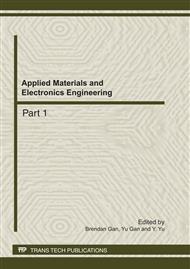p.151
p.157
p.161
p.166
p.171
p.179
p.187
p.191
p.196
Bidirectional Moving Force Identification on an Orthotropic Rectangular Plate
Abstract:
Based on the modal superposition and dynamic programming theory, a method is proposed to identify bidirectional moving forces from orthotropic plate bridge responses in time domain. The bridge deck is modeled as an orthotropic plate and the moving vehicle loads are modeled as two groups of axle loads moving cross the bridge deck in two opposite directions. The equation of motion is formulated in state space and the resulting damped least-square identification problem is solved using the dynamic programming method with regularization on the solution. Some numerical simulations show that the proposed method is effective, accurate and suitable for the bidirectional moving vehicle load identification. Some parameter effects of measurement noise and of eccentricity of moving loads on the identification accuracy are discussed as well.
Info:
Periodical:
Pages:
171-175
Citation:
Online since:
October 2011
Price:
Сopyright:
© 2012 Trans Tech Publications Ltd. All Rights Reserved
Share:
Citation:


